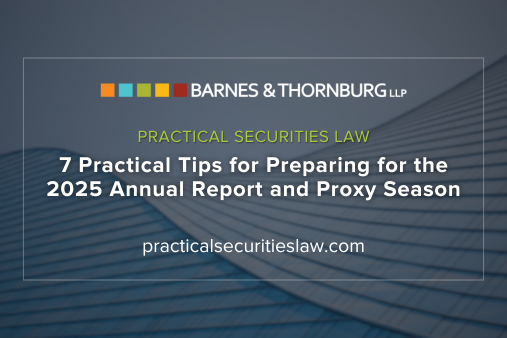On Jan. 21, the Supreme Court of the United States unanimously affirmed a decision of the Ninth Circuit Court of Appeals, holding that when a jury trial has been requested and the facts do not warrant summary disposition, the question whether trademark tacking is warranted must be decided by a jury.
Tacking is a doctrine that allows trademark owners to refresh or update their trademark without losing the priority of the earlier mark. So that the mark owner does not use tacking to expand its rights improperly, tacking is an extremely narrow doctrine, limited to updated marks that are "legal equivalents" creating the same, continuing commercial impression as the original mark. The commercial impression conveyed by the mark must be viewed through the eyes of a consumer. The issue before the Supreme Court was whether the question of continuing commercial impression was to be answered by a judge or a jury, in a case for which a jury trial was requested. The Court held that the decision-maker should be the jury, as the jury is better suited to decide issues, like tacking, that must be viewed through the eyes of an ordinary person or community.
In 1994, Respondent Hana Bank adopted the mark “Hana Overseas Korean Club” to offer financial services to Korean expatriates living in the US. Hana Bank published newspaper ads with the name “Hana Overseas Korean Club” in English, and ”Hana Bank” in Korean with a “dancing man” logo. Petitioner Hana Financial adopted the name ”Hana Financial” in 1995 in connection with factoring and other financial services, other than banking services. Hana Financial obtained a federal registration for its “Hana Financial” mark and logo in 1996, for factoring and other financial services. In 2000, Hana Bank changed its name from “Hana Overseas Korean Club” to “Hana World Center.” Hana Bank tried to register “Hana World Center” in 2001, but its application was refused based on Hana Financial’s prior registration for “Hana Financial”. The two entities tried to work out a coexistence agreement, but were unable to come to terms.
In 2007, Hana Financial filed suit against Hana Bank for trademark infringement and related claims. Hana Bank counterclaimed for cancellation of Hana Financial’s Federal trademark registration. At trial, Hana Financial sought to exclude Hana Bank’s 1994 advertisements for “Hana Overseas Korean Club/Hana Bank” in Korean, arguing they were irrelevant. It asserted the marks were not virtually identical, and therefore it would be improper to tack the earlier mark onto the later mark for purposes of establishing priority. The motion was denied. Both sides submitted similar jury instructions on the tacking issue, and Hana Financial did not object to the Court’s jury instructions on the issue. The jury found that Hana Bank had used its mark in U.S. commerce prior to Hana Financial’s priority date of April 1, 1995, and continuously since then. Hana Financial appealed to the Ninth Circuit Court of Appeals.
The Ninth Circuit considers the question whether two marks are sufficiently similar for tacking to apply to be a question of fact for a jury. As such, the jury’s tacking verdict was to be upheld if it was supported by substantial evidence, even if it is possible to draw a contrary conclusion.
To set aside the judgment, Hana Financial had to show that its interpretation of the evidence was the only reasonable one. The Ninth Circuit found Hana Financial had not satisfied that standard, because the jury instruction conveyed correctly how narrow is the tacking exception, and because the jury could reasonably have concluded that ordinary purchasers received a consistent, continuous commercial impression from each of Hana Bank’s trademarks, and that there were no material differences between the marks. As a result, there was sufficient evidence to support the jury’s verdict on tacking, and thus on trademark priority.
Affirming the Ninth Circuit Court’s decision, the Supreme Court reasoned that application of a test, like tacking, that relies on an ordinary consumer's understanding of the impression that a mark conveys “falls comfortably within the ken of a jury”, Hana Financial, Inc. v. Hana Bank, 574 U.S. ___ at 4 (2015). The Court cited cases across a variety of contexts for the proposition that where the relevant question is how an ordinary person or community would make an assessment, the jury is the decision-maker to provide that assessment.
A judge may still have a role in making tacking decisions, for example where summary judgment or judgment as a matter of law is appropriate, or where the parties have not requested a trial by jury. The Court’s holding was limited to situations where a jury trial has been requested and summary resolution of tacking was not appropriate.
In its opinion, the Ninth Circuit noted the split among the circuits as to whether tacking was a question of law for the judge or a question of fact for the jury. The Court also noted that the circuits were split along the same lines as to whether the broader issue of likelihood of confusion is a question of law or a question of fact. Although the Supreme Court acknowledged the former split, it did not address the latter. Those who believed the Court’s decision in Hana Bank would shed light on the longstanding circuit split on likelihood of confusion must wait for another day.
For more information, contact the Barnes & Thornburg attorney with whom you work or a member of the firm’s Intellectual Property Law Department in the following offices: Atlanta (404-846-1693), Chicago (312-357-1313), Columbus (614-628-0096), Delaware (302-300-3434) Elkhart (574-293-0681), Fort Wayne (260-423-9440), Grand Rapids (616-742-3930), Indianapolis (317-236-1313), Los Angeles (310-284-3880), Minneapolis (612-333-2111), South Bend (574-233-1171), Washington, D.C. (202-289-1313).
©2015 Barnes & Thornburg LLP. All Rights Reserved. This page, and all information on it, is proprietary and the property of Barnes & Thornburg LLP. It may not be reproduced, in any form, without the express written consent of Barnes & Thornburg LLP.
This Barnes & Thornburg LLP publication should not be construed as legal advice or legal opinion on any specific facts or circumstances. The contents are intended for general informational purposes only, and you are urged to consult your own lawyer on any specific legal questions you may have concerning your situation.










/Passle/6488d4630e7e25c9ac9f834a/SearchServiceImages/2025-01-10-22-16-01-995-67819c21f01b92931abcaac4.jpg)

